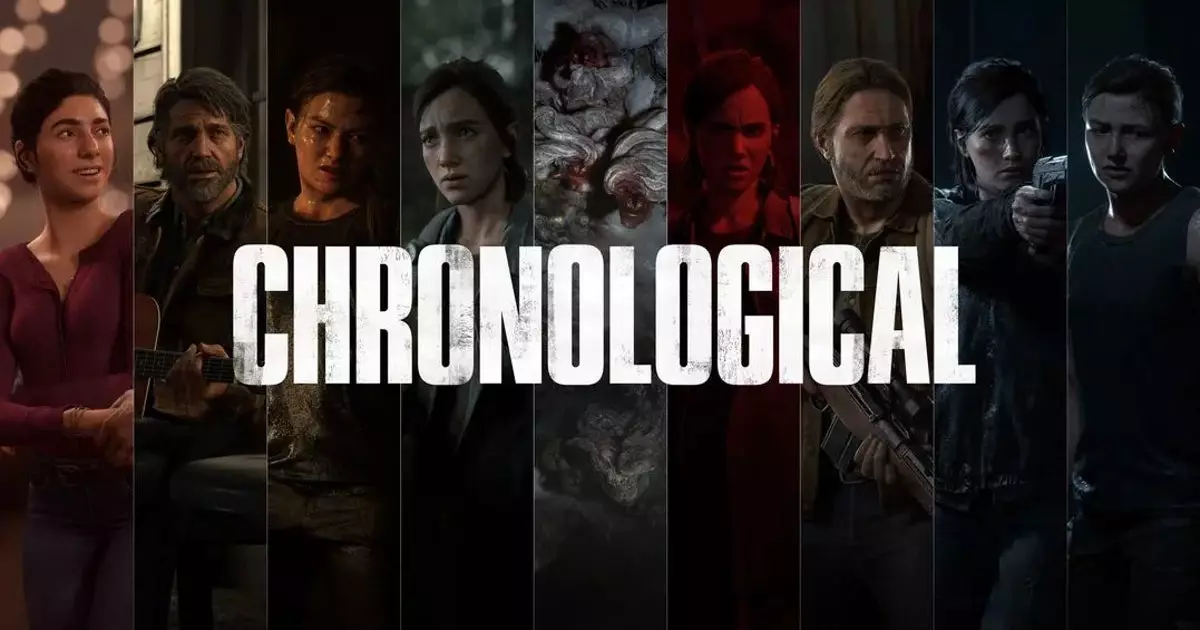Naughty Dog’s recent release of a new “Chronological Mode” for The Last of Us Part II Remastered marks a daring, if contentious, experiment in storytelling. This mode aims to transpose the game’s intricate non-linear narrative into a straightforward, chronological sequence. On the surface, such a feature might seem like a simple enhancement for curiosity or accessibility, but beneath the surface, it raises profound questions about the nature of storytelling, player engagement, and artistic intent.
The original structure of The Last of Us Part II was intricately crafted to evoke emotional resonance through its tangled timeline. Flashbacks, concurrent narratives, and shifting perspectives weren’t mere storytelling gimmicks but vital tools to immerse players into the complexities of Ellie and Abby’s intertwined journeys. To disentangle that web and present events in linear order risks stripping away the very mechanisms that give the narrative its depth, nuance, and thematic weight. Naughty Dog’s assertion that this new mode provides “deeper insight” appears, at best, a generous oversimplification; at worst, a misunderstanding of how narrative architecture functions.
The Artistic Gamble: Why Non-Linear Storytelling Matters
It’s essential to critique the underlying idea that chronological order automatically enhances understanding. Great storytelling often relies on the deliberate presentation of information—when and how revelations unfold is a tool to evoke suspense, empathy, and thematic resonance. In the case of The Last of Us Part II, non-linearity is not merely stylistic; it’s a deliberate choice that forces players to confront the story’s moral ambiguities and emotional contradictions out of sequence, mirroring real human experience — fragmented, messy, and unpredictable.
By reordering events into a tidy timeline, Naughty Dog risks diluting these thematic complexities. The game’s powerful impact largely derives from witnessing Ellie’s emotional evolution through flashbacks that challenge the patient’s notions of revenge, forgiveness, and loss. Removing that narrative scaffolding may deliver a more “transparent” story but at the cost of profound engagement. It’s much like watching a film in linear order when the filmmakers intentionally blurred timelines — a loss of narrative richness, not a gain.
Audience Reception and Cultural Impact
The tone of the studio’s announcement hints at a certain defensiveness — perhaps realizing that this feature won’t resonate with everyone. Notably, Naughty Dog explicitly warns that the mode isn’t recommended for new players, acknowledging its complexity and the delicate fabric of the original story. This acknowledgment raises questions about why they introduced it at all. Is it an artistic experiment, a marketing stunt, or an attempt to cater to a niche audience craving “what if” scenarios?
Public reaction has been mixed, with some fans intrigued by the novelty, eager to see the story from a fresh perspective. Yet many criticize this as undermining the narrative’s artistic integrity. The sentiment echoes the age-old debate: should video games be about rigid storytelling or fluid, player-driven experiences? Naughty Dog’s move leans heavily into the latter, but it risks alienating players who treasure the original storytelling craft.
Don’t Mistake Complexity for Artistic Innovation
The comparison to iconic films or literary masterpieces being restructured chronologically only emphasizes how fundamentally different the mediums are. A film or novel has a fixed, deliberate sequence designed to evoke specific emotional and thematic responses. Games, especially narrative-driven ones like The Last of Us Part II, leverage non-linearity to deepen immersion and thematic exploration.
Calling this mode “fascinating” seems more like a hedging of bets rather than a true artistic vision. The studio’s flirtation with just reordering events isn’t necessarily a bold innovation but a sign of how uncomfortable they are with the complexity they initially harnessed. It’s like rewriting a Shakespeare play into a straightforward script — something might be lost, and what remains might not hold the same depth or subtlety.
A Final Reflection on Artistic Risks
Naughty Dog’s experiment may serve as a case study in how the best stories are those that challenge and provoke. Simply presenting a story in a linear manner does not guarantee profundity; in fact, it often simplifies the narrative’s richness. The company’s boldness to offer this mode hints at a willingness to explore different ways of engaging players, but at what cost?
In the end, innovative storytelling doesn’t necessarily mean restructuring narratives into linear order. It demands a deeper understanding of what makes stories resonate—emotional complexity, thematic ambiguity, and strategic narrative pacing. Naughty Dog’s move, while intriguing, risks reducing The Last of Us Part II to a bypassed puzzle rather than a carefully woven tapestry. True artistry often lies in what’s deliberately left fragmented, ambiguous, and non-linear — precisely what makes the original game such a compelling canvas.

